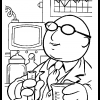Hi joeysmith073,

Welcome to the IFSQN forums.
There seems to be some confusion here, metal detection is a control measure used to reduce or eliminate a metal hazard to an acceptable level, therefore is likely to be low risk with regards to introducing a metal hazard. I’m not really sure what this process risk analysis is about.
The metal hazards will normally be (or should be) in steps prior to metal detection. So, you identify hazards and assess if they are significant and then decide on CCPs.
Explained as per CODEX HACCP Application Guidelines:
For hazard analysis CODEX Step 6/Principle 1, you are required to:
‘List all potential hazards that are likely to occur and associated with each step, conduct a hazard analysis to identify the significant hazards, and consider any measures to control identified hazards (CODEX Step 6/Principle 1)’
So, you will identify potential metal hazards at each step during your hazard analysis and any control measures.
Next you look at the hazards and ‘evaluate the hazards to identify which of these hazards are such that their prevention, elimination, or reduction to acceptable levels is essential to the production of safe food (i.e. determine the significant hazards that have to be addressed in the HACCP plan).’
Next is Step 7/Principle 2 Determine the critical control points (CCPs)
‘CCPs are to be determined only for hazards identified as significant as the result of a hazard analysis. CCPs are established at steps where control is essential and where a deviation could result in the production of a potentially unsafe food.’
To identify a CCP, whether using a decision tree or other approach, the following should be considered:
1. Assess whether the control measure can be used at the process step being analysed:
− If the control measure cannot be used at this step, then this step should not be considered as a CCP for the significant hazard.
− If the control measure can be used at the step being analysed, but can also be used later in the process, or there is another control measure for the hazard at another step, the step being analysed should not be considered as a CCP.
2. Determine whether a control measure at a step is used in combination with a control measure at another step to control the same hazard; if so, both steps should be considered as CCPs.
As you have posted in an SQF Food forum note that the SQF Food Safety Code requires:
2.4.3.1 A food safety plan shall be prepared in accordance with the twelve steps identified in the Codex Alimentarius Commission HACCP guidelines.
2.4.3.7 The food safety team shall identify and document all food safety hazards that can reasonably be expected to occur at each step in the processes, including raw materials and other inputs.
2.4.3.8 The food safety team shall conduct a hazard analysis for every identified hazard to determine which hazards are significant, i.e., their elimination or reduction to an acceptable level is necessary to control food safety. The methodology for determining hazard significance shall be documented and used consistently to assess all potential hazards.
2.4.3.9 The food safety team shall determine and document the control measures that must be applied to all significant hazards. More than one control measure may be required to control an identified hazard, and more than one significant hazard may be controlled by a specific control measure.
2.4.3.10 Based on the results of the hazard analysis (refer to 2.4.3.8), the food safety team shall identify the steps in the process where control must be applied to eliminate a significant hazard or reduce it to an acceptable level (i.e., a critical control point or CCP).
Kind regards,
Tony















